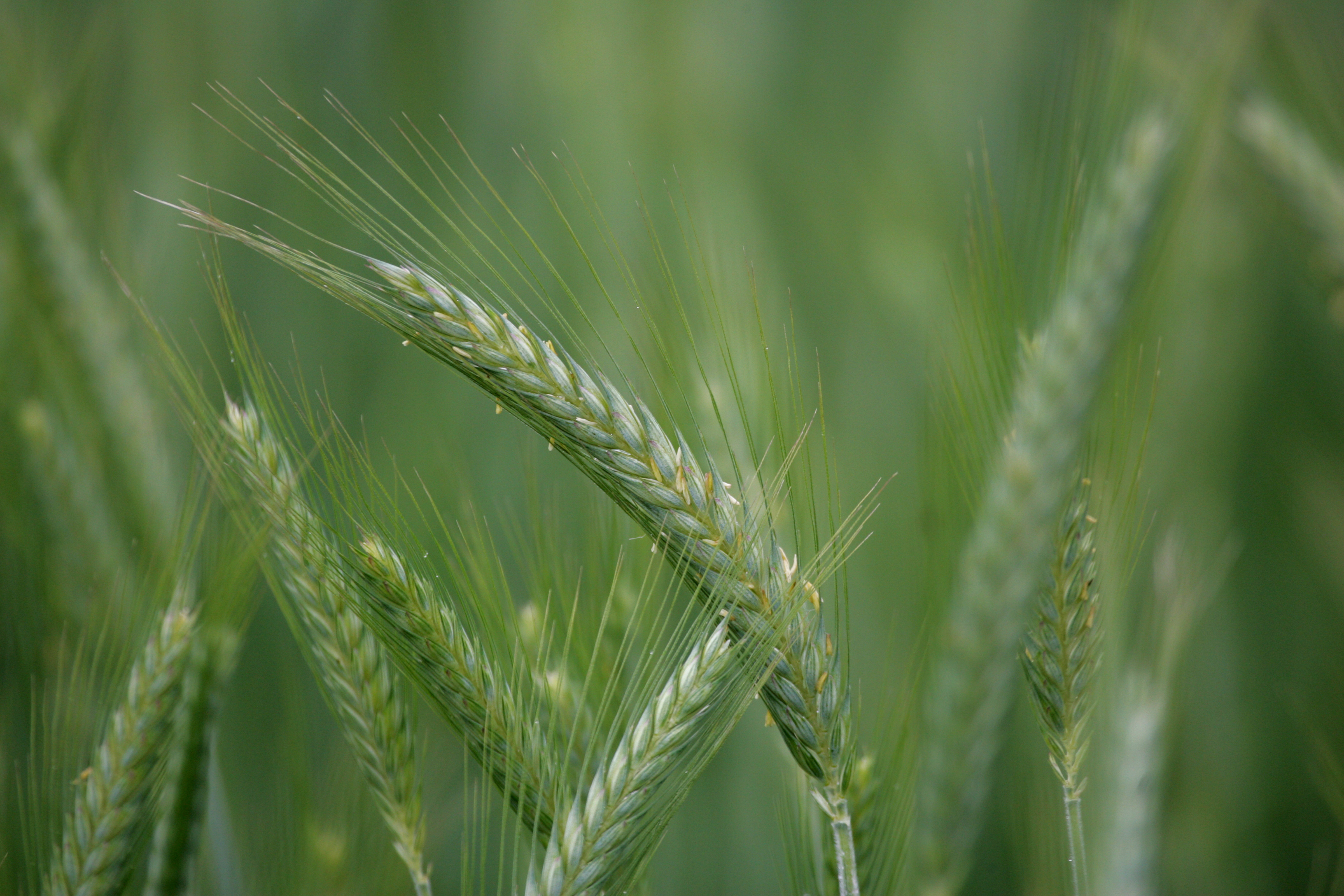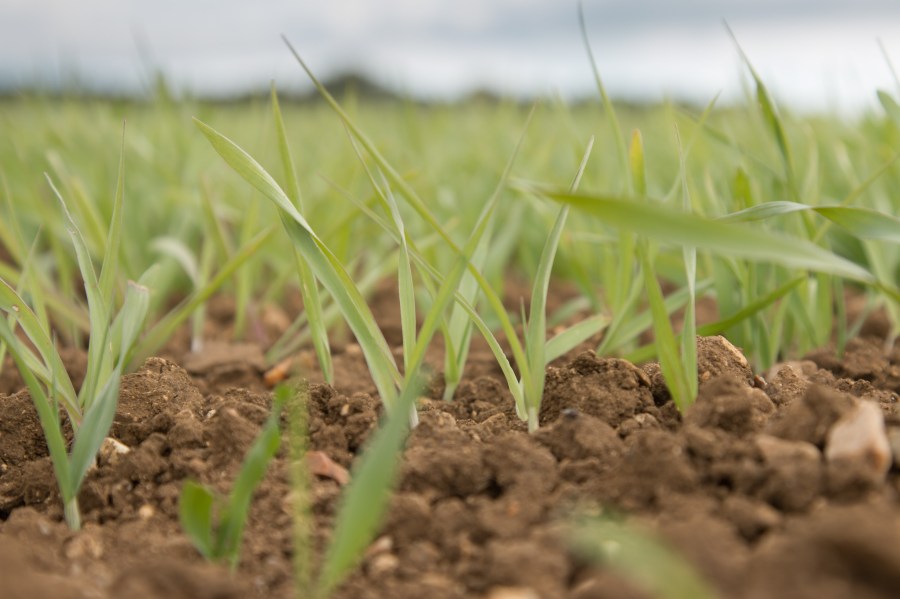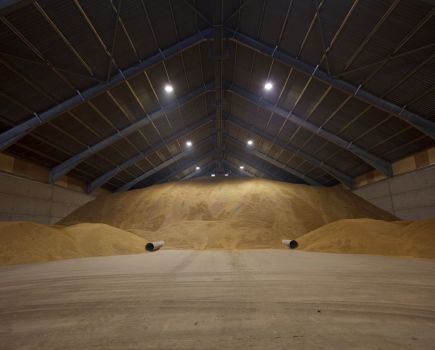Ramularia leaf spot is proving to be a tricky disease to predict. CPM reveals how researchers are attempting to understand this complex disease to help develop an integrated approach to its control.
Varieties perform very differently between trials sites because environmental factors play such a large part in whether ramularia expresses symptoms.
By Lucy de la Pasture
Ramularia leaf spot is a barley disease best described as a plant pathologist’s dream and a farmer’s nightmare. The fungus that causes the disease is not only a master of disguise, it’s also shown a remarkable ability to overcome the activity of three major fungicide groups.
Although the fungus Ramularia collo-cygni was first noted in Italy in 1893, it’s a relatively new disease and is still not well understood, explains AHDB disease scientist Catherine Garman.

Flowering is often the stress which triggers the ramularia fungus to become pathogenic.
Uncovering the interactions between the ramularia pathogen and its host is proving to be complex. Dr Neil Havis, plant pathologist at SRUC, describes R. collo-cygni as ‘one of a kind’ and ‘more elusive than septoria’ so the learning curve to better understand the disease is a steep one.
“SRUC studies have shown most barley seeds are infected with R. collo-cygni, an endophytic fungus which grows invisibly within its host plant’s tissues without causing it any harm,” he explains.
Molecular studies have revealed the pathogen has a genetic make-up that ‘cloaks’ the fungus, enabling it to escape detection by the host’s defences. The fungus remains seemingly benign until it’s triggered by a change in the host to complete its lifecycle and sporulate.
“This happens late in the season when the barley plant is under stress, often at flowering when leaves stop becoming the sink for nutrients and start to be the source of energy to feed the ears, but it can also be triggered by a range of environmental stress factors.
“The ramularia pathogen then turns necrophytic, producing a number of light-activated toxins which breakdown the host’s tissues. It’s this process that gives rise to the brown spots on crop leaves that characterise the disease,” explains Neil.
The unusual lifecycle of the ramularia pathogen makes it a difficult disease to predict because it’s asymptomatic for the best part of the growing season. Current control measures rely on a preventative fungicide application at booting (GS45-49) to reduce the impact of the disease.
Neil has been leading an AHDB-funded project to determine whether it’s possible to predict ramularia risk early in the growing season to allow more carefully targeted fungicide applications.
The approach taken was to refine the Scottish model by comparing leaf wetness after stem extension with disease levels in the crop over years and sites, rather than a calendar-based forecast. This was thought to be the key environmental parameter driving symptom formation, but the results have shown a risk model based on a single factor isn’t accurate for this complex disease year on year, explains Neil.
“In the project’s final year, we looked at seven additional parameters (at Recommended List sites), as well as leaf wetness. In 2017 we found a correlation between ramularia expression in spring barley and high levels of leaf wetness across the whole growing season together with high temperatures.”
A PhD student at SRUC has also looked at historic SRUC trial data from 25 trials but couldn’t identify a consistent environmental variable which influenced disease epidemics. These results highlight the difficulty in forecasting a disease where the severity of symptoms is influenced by many factors which affect both the growth of the fungus and the growth of the crop, comments Neil.
In a further AHDB-funded PhD project at SRUC, Clarinda Burrell is attempting to shed more light on the interaction between the fungus and its host. The results will enable breeders and agronomists to determine whether it’s important to prevent the asymptomatic growth of ramularia or simply the development of visible symptoms and so aid the development of more effective host resistance and disease control strategies.
The instances of sudden and complete breakdown in efficacy of azole and SDHI chemistry against the ramularia pathogen in 2017 (UK) has further enhanced the need to understand the disease in order to exploit any weaknesses it may have in an effort to control it.
“No one expected ramularia to develop resistance to either the azoles or SDHIs so quickly and at the same time, that was unprecedented. The expectation was for resistance to develop in a similar way to the septoria pathogen with a gradual decline in efficacy,” comments Neil.
It’s also a disease of global importance that’s evolving fungicide resistance differently in different countries, explains Neil. “In the UK and Germany there’s been a breakdown in azole and SDHI efficacy against ramularia, whereas in New Zealand and South America azole chemistry is still working. Denmark has seen the azoles lose some activity against ramularia, but it hasn’t been a total breakdown.
Ramularia is a generalist fungus which means it infects many other grass species, including wheat but it’s only pathogenic in barley. “The rapid evolution of fungicide resistance indicates there’s a huge amount of genetic variation in the ramularia population, so a lot of sexual recombination is occurring,” he adds.
The potential loss of chlorothalonil could put a large spanner in the works when it comes to chemical control of ramularia. “In-vitro tests have shown chlorothalonil has some activity against the ramularia fungus but it’s also likely application reduces the amount of UV light reaching the leaf, lowering toxin production in the fungus.
“Previous studies at SRUC have shown the alternative multi-site, folpet, did not have field efficacy against ramularia but it’s something we’ll look at again because in New Zealand folpet is used with success,” adds Neil.
Global ramularia experts come together
AHDB have recently hosted an international workshop to discuss what is currently known about the disease and how to counter it.
“With limited options currently available to control ramularia, AHDB decided to hold an international workshop to bring together researchers, plant breeders, agrochemical companies, agronomists, and other experts from Europe, South America, South Africa, Australia, and New Zealand to share their different experiences and theories,” comments Catherine.
Plant breeding for resistant and tolerant traits was widely considered to be a key priority. “Another option would be to look at canopy architecture and aim to limit the stress from sunlight, or to breed varieties which are earlier maturing as these may escape symptom expression. This may lead to lower yields but shouldn’t compromise on quality.
“Selecting varieties based purely on high green leaf area, without extending maturity, may be a way to select for multi-disease resistance in an efficient way, rather than focussing on specific diseases as we currently do,” highlights Catherine.
“Revisiting products to apply to the leaves which have antioxidant properties aimed at delaying the onset of symptom development could also be an option, as well as the use of elicitors which switch on the resistance genes within the crop.
“Cover crops which improve soils and fertility or suppress any spore release from straw are also being investigated. Another step would be to take up the strategy used in Uruguay where micro and macronutrients are applied to the crop early in the season to minimise nutritional stress and ensure good crop growth.
“Another alternative is to revisit fungicides which may have a limited effect on ramularia, for example cyprodinil and sulphur,” she adds.
Other options discussed that have not yet been investigated include the role of mycorrhizal fungi, biostimulants and the effect of agronomic conditions such as no-till.
“The workshop highlighted how very complex ramularia is and also that experience and problems are often shared across the globe. It’s only through international collaboration that we’ll we be able to find solutions to tackle this disease,” she adds.
Meeting the resistance challenge
A slow-down in the innovation pipeline and increased use of existing active ingredients to support higher barley yields have put a greater selection pressure on disease pathogens, making the appearance of resistance to fungicides more likely. An essential part of modern farming is to adopt comprehensive anti-resistance strategies to slow the development of fungicide resistance and preserve efficacy of both existing and new chemistry, explains Catherine.
“AHDB introduced the Fungicide Futures initiative last December to provide strategies to growers to help maintain fungicide efficacy. Ramularia is of particular concern because of the pathogen’s shifts in sensitivity to the strobilurins, azoles and SDHIs,” she says.
So what can growers do to maintain control of ramularia? Selecting varieties with good genetic resistance to diseases is the foundation strategy for reducing the selection pressure on pathogens, explains AHDB’s Dr Simon Oxley.
A recent LINK project, ‘Control of Ramularia Leaf Spot in a Changing Climate’ (CORACLE) made the important discovery that the mlo gene, which controls powdery mildew in many spring barley varieties, can potentially increase susceptibility to ramularia.
“The strength of the effect of mlo depends on environmental conditions, but it’s possible to select for improved ramularia-resistance in mlo varieties. This is reflected in current spring barley varieties some of which combine resistance to mildew with improved resistance to ramularia compared to those used commercially 15 years ago,” says Simon.
A key focus for plant breeders is to produce varieties with ramularia resistance, says Simon, and it is likely multiple genes will be involved (quantitative resistance) rather than a single gene.
“Because a critical stage in the life-cycle of the R. collo-cygni fungus is the transition from growing harmlessly within the barley plant to becoming an aggressive parasite, and physical stress plays a central role in this transition, breeding varieties which are better able to tolerate stress is another strategy for breeders,” he says.
“At the end of the day it’s not essential for barley varieties to resist ramularia, but it would help limit the effect of ramularia if breeders are able to produce tolerant plants which don’t respond to the environmental stresses which trigger the fungus to become pathogenic.
Limiting crop stresses to the growing crop will also help protect the crop from ramularia. Stress factors which can make ramularia symptoms worse include some chemical applications (e.g. late-season applied morpholines), waterlogging and the lower N levels used in malting crops.
The key fungicide timing for ramularia control is at T2 (awns emerging stage) in barley and chlorothalonil is the only mode of action with efficacy against ramularia and should be included where a T2 fungicide is applied, reminds Simon.
Tricky identification forces change to 2019-20 Recommended List
Earlier this year AHDB published guidance on identifying ramularia leaf spot, but in practice it remains a tricky disease to pinpoint late in the season when barley leaves are likely expressing the symptoms of spotting due to other diseases, nutrient disorders or physiological stress.
Spring barley varieties were first given a ramularia resistance rating in the AHDB’s Recommended List in 2013, explains Catherine, with winter barley ratings added in 2018 but this will change in the latest edition of the RL.
“We’ve found that varieties perform very differently between trials sites because environmental factors play such a large part in whether ramularia expresses symptoms. Identification has also proved problematic, with a variation in results between pathologists and trials operatives when it came to assessing barley leaves for the disease,” she explains.
As a result, ramularia resistance ratings won’t appear within the 2019-2020 RL but it’s anticipated they will return in future years once a more meaningful system to assess the varietal susceptibility to the disease is put in place.
“In 2019 AHDB will be adding specific ramularia assessment trials to the RL programme. These will take place in locations where barley consistently gets the disease. The varieties will receive a comprehensive fungicide programme but chlorothalonil won’t be applied,” explains Catherine.
The rationale is that all other foliar diseases will be well controlled but leaving out the one active ingredient that still has an effect on the ramularia pathogen will allow its symptoms to be expressed in the absence of other disease.
“All the ramularia trials will be assessed by a plant pathologist which will mean the assessment is consistent in each variety and will provide the basis for a more meaningful resistance rating,” she adds.
Research roundup
AHDB Project No 21120009 ‘Development of UK wide risk forecast scheme for Ramularia Leaf Spot in barley’, ran from Sept 2014 to Sept 2017 at a cost of £74,698 and was led by SRUC.
AHDB Project No 2140018105 ‘Understanding interactions between Ramularia collo-cygni and barley leaf physiology to target improvements in host resistance and disease control strategies’. The PhD ran from Oct 2014 to March 2017 at a cost of £45,252 and was led by SRUC.
AHDB ‘Ramularia leaf spot in barley’ factsheet (2018) is available at ahdb.org.uk/knowledge-library/ramularia
AHDB Fungicide Futures guidance is available at cereals.ahdb.org.uk/fungicidefutures




